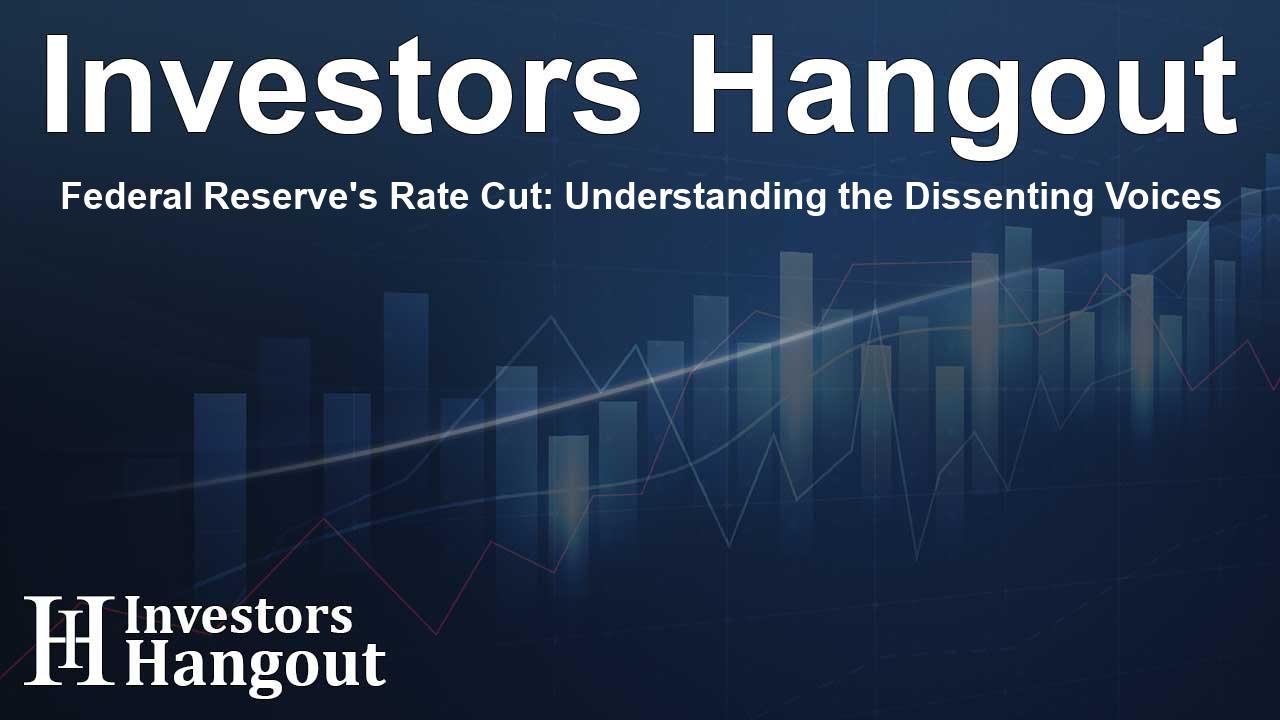Federal Reserve's Rate Cut: Understanding the Dissenting Voices

Understanding the Federal Reserve's Recent Rate Cut Decision
The Federal Reserve recently embarked on a significant journey by initiating what is anticipated to be a series of interest rate cuts in the upcoming months. This bold move, however, may not have been universally embraced by all members of the central bank, according to the latest projections of policymakers.
A Slim Majority's Support
As suggested by analysts, the backing for this decision among the 19 Fed policymakers appears to be just a slim majority. While only one formal dissent was voiced, courtesy of Fed Governor Michelle Bowman, indications suggest that a notable number of decision-makers may have expressed some reservations or participated with reluctance.
Anticipated Future Cuts
The implications of the more aggressive rate cut were further discussed amongst analysts, particularly after the previous meeting, where the expectations were relatively conservative. Observing previous discussions, Powell had highlighted broad agreement among members of the committee, distinctly different from the discord this time around.
The Background of Dissent
The last time a Fed governor publicly dissented was nearly two decades ago. Bowman's opposition reflects a long-standing advocacy for maintaining stricter policies for an extended duration. Analysts also noted a divide in projections regarding the year-end policy rate, with many suggesting only a minimal adjustment rather than the more pronounced cut that occurred.
The Committee's Decision-Making Dynamics
Throughout deliberations, it was clear that seven central bankers were rooting for a more conservative approach, anticipating a 4.5%-4.75% range. This divergence among policymakers illustrates a fractured outlook regarding the future of interest rates, with many likely favoring moderation over substantial changes.
Broad Impacts and Future Expectations
Economists from various firms have weighed in on this decision, suggesting that the leadership within the Fed may have driven through a larger cut without comprehensive agreement from all quarters. The anticipation now shifts to whether additional cuts will follow in the upcoming meetings, painting a picture of ongoing discussions among industry leaders.
Voices from Analysts and Economists
Voices from prominent analysts highlight the intricate dynamics at play during these decision-making processes. Goldman Sachs, for instance, adjusted its prior forecasts in response to the unexpected depth of the rate reduction. Instead of a cautious approach, they now see a series of consecutive smaller cuts at forthcoming meetings.
Future Considerations and Economic Health
The economic landscape continues to be a primary focus for the Fed, with many economists arguing the necessity of further cuts to shield the economy from potential downturns. Some policymakers perceive the current job situation as not deteriorating swiftly enough to justify the larger rate reduction, complicating the narrative around future cuts.
The Subtle Signals from Leadership
The leadership's tendencies to present optimism regarding job market risks, as noted by analysts, may have played a pivotal role in the committee's final decision. This highlights a paradox wherein the urgency for cuts runs parallel to a managed perception of employment metrics.
Frequently Asked Questions
What prompted the Federal Reserve's recent rate cut?
The recent cut was part of a strategy to initiate further rate reductions in the coming period, reflecting evolving economic conditions.
Why was there dissent among policymakers?
While a majority supported the cut, there were notable concerns, particularly voiced by Governor Michelle Bowman, indicating a split within the committee.
How might this impact future rate decisions?
The decision could influence subsequent rate cuts, as many policymakers now seem to have diverging opinions on the immediate need for further reductions.
What does the 'dot plot' indicate?
The 'dot plot' reveals various expectations among policymakers regarding future interest rates, showing a mix of conservative and aggressive rate predictions.
How are analysts interpreting these developments?
Analysts are closely monitoring the discussions, noting that there appears to be a shift towards more aggressive cuts, reflecting pressures faced by the Fed leadership.
About Investors Hangout
Investors Hangout is a leading online stock forum for financial discussion and learning, offering a wide range of free tools and resources. It draws in traders of all levels, who exchange market knowledge, investigate trading tactics, and keep an eye on industry developments in real time. Featuring financial articles, stock message boards, quotes, charts, company profiles, and live news updates. Through cooperative learning and a wealth of informational resources, it helps users from novices creating their first portfolios to experts honing their techniques. Join Investors Hangout today: https://investorshangout.com/
Disclaimer: The content of this article is solely for general informational purposes only; it does not represent legal, financial, or investment advice. Investors Hangout does not offer financial advice; the author is not a licensed financial advisor. Consult a qualified advisor before making any financial or investment decisions based on this article. The author's interpretation of publicly available data shapes the opinions presented here; as a result, they should not be taken as advice to purchase, sell, or hold any securities mentioned or any other investments. The author does not guarantee the accuracy, completeness, or timeliness of any material, providing it "as is." Information and market conditions may change; past performance is not indicative of future outcomes. If any of the material offered here is inaccurate, please contact us for corrections.